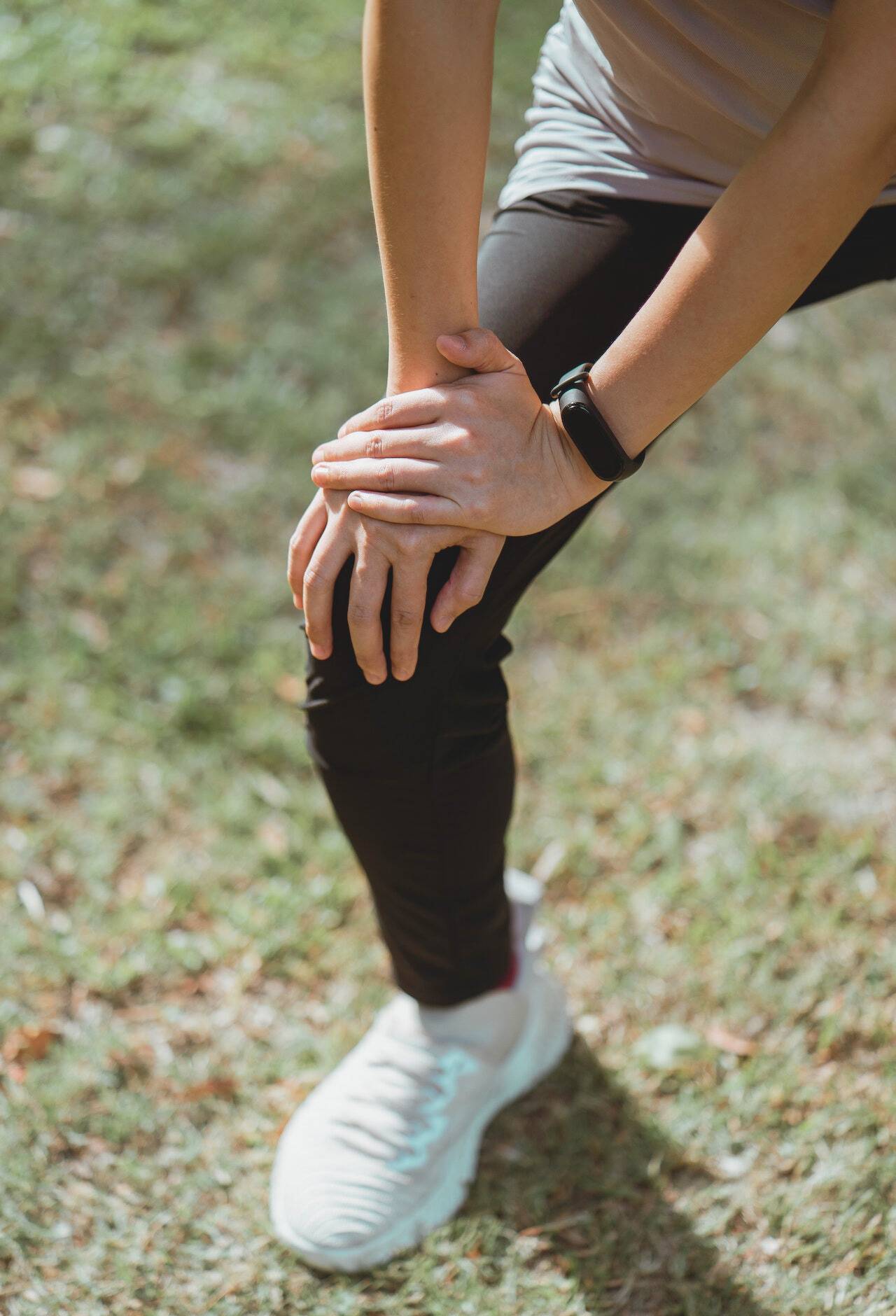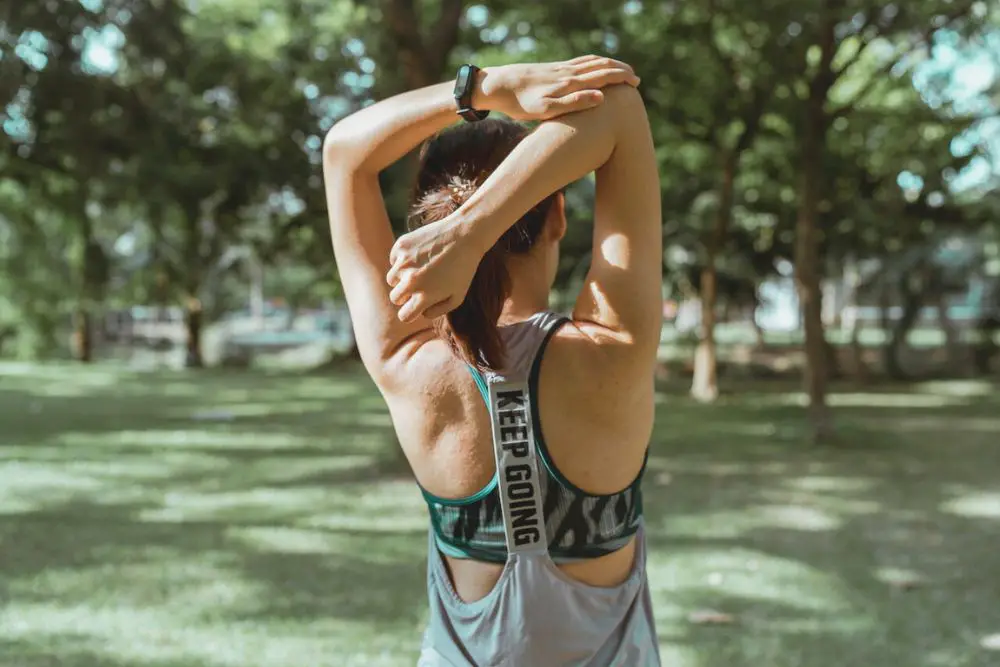Rebounding, a type of exercise involving jumping on a mini trampoline, has become increasingly popular in recent years due to its low-impact nature and numerous benefits. However, some people are concerned about the potential risks of rebounding, notably whether it can cause knee injuries.
Given that the knee joint is complex and prone to injury, it is essential to understand the potential risks associated with this form of exercise.
This article will explore the question, “Can rebounding hurt your knees?” We will discuss common knee injuries, how rebounding can impact the knees, and provide tips for minimizing the risk of knee injuries during rebounding.
Are trampolines bad for your knees?
Trampolining is a fun and effective way to exercise, with many people using trampolines to improve their cardiovascular health, strength, and balance. However, some people are concerned that trampolines may be bad for their knees.
To understand the impact of trampolining on the knees, it’s significant to first understand the anatomy of the knee joint. The knee joint is composed of bones, cartilage, ligaments, and tendons that work together to provide stability and mobility. The kneecap (patella) sits in a groove on the thighbone (femur), and the lower leg bone (tibia) rests on top of the foot bone (talus).
The knee joint also includes two crescent-shaped pieces of cartilage called menisci that act as shock absorbers. There is a risk of knee injuries from trampolining, particularly if proper safety precautions are not taken.
Common Knee Injuries
Before delving into the specific risks of rebounding for the knees, it’s essential to understand some of the most common knee injuries. These can include:
Anterior Cruciate Ligament (ACL) Injuries
The ACL is a ligament that connects the thigh and shin bones. It’s responsible for stabilizing the knee joint and preventing excessive forward movement of the shin bone. ACL injuries can occur when the knee is twisted or hyperextended, leading to a tear in the ligament.
Meniscus Tears
The meniscus, a fibrocartilaginous structure, serves as a vital cushion to the synovial joint of the knee, providing essential shock absorption and load distribution capabilities. Tears in the meniscus can occur due to sudden twisting or rotating knee movements.
MCL (Medial Collateral Ligament) Injury
This is a sprain or tear in the MCL, a ligament that runs along the inside of the knee.
Patellofemoral Pain Syndrome
This condition is characterized by pain in the front of the knee, particularly around the kneecap. Overuse, muscle imbalances, or other factors can cause it.
Patellar Tendinitis
This is a tendon inflammation that connects the kneecap to the shinbone.

How Knee Injuries Can Occur During Exercise?
Like any form of exercise, rebounding carries the risk of knee injuries. Here are some ways knee injuries can occur during rebounding:
Landing Improperly
When jumping on a rebounder, it is crucial to land softly and adequately to avoid knee injuries. Landing too hard or with a straight leg can put excessive stress on the knees, leading to sprains, strains, or other injuries.
Jumping too High
Jumping too high on a rebounder can also increase the risk of knee injuries. The higher the jump, the more complex the landing, which can cause a sudden jolt to the knees, resulting in injury.
Not Wearing Proper Footwear
Wearing improper footwear while rebounding can also increase the risk of knee injuries. Shoes with inadequate support or traction can cause instability, making them more likely to land improperly and injure the knees.
Pre-Existing Conditions
People with pre-existing knee conditions, such as arthritis or previous injuries, are more prone to knee injuries during rebounding. These conditions can weaken the knee joint, making it more susceptible to injury.
How Rebounding Can Impact the Knees?
Rebounding involves jumping on a trampoline or rebounder for fitness or fun. While this can be a low-impact exercise that is easy on the joints, it can still pose risks for the knees if not done correctly.
Some potential risks of rebounding for the knees include:
- Knee Strains and Sprains: Jumping on a trampoline can place much stress on the knees, particularly if the person jumps too high or lands improperly. This can lead to strains or sprains in the knee joint.
- Patellofemoral Pain Syndrome: Rebounding can also increase the risk of developing this condition, particularly if the person jumps frequently or improperly.
- ACL Injuries: While less common, ACL injuries can also occur during rebounding if the person lands awkwardly or twists the knee.
Factors That Can Affect Knee Safety During Rebounding
Several factors can impact the safety of the knees during rebounding. These can include:
- Age and Fitness Level: Older individuals or those with existing knee problems may be more prone to knee injuries during rebounding. Additionally, people who are overweight or out of shape may be at higher risk.
- Equipment Quality: Using a poorly constructed trampoline or rebounder can increase the risk of injury.
- Technique: Proper form and technique are essential for minimizing the risk of knee injuries during rebounding. This can include maintaining a soft landing, jumping with the knees slightly bent, and avoiding excessive twisting or hyperextension of the knee.
Minimizing the Risk of Knee Injuries During Rebounding
Fortunately, several strategies can be employed to minimize the risk of knee injuries during rebounding. These can include:
Warming Up
Before rebounding, it is essential to properly warm up the body, including the knees. This can involve light stretching and movements to increase blood flow and flexibility.

Proper Footwear
Wearing appropriate footwear can help absorb some of the impacts of jumping and landing, reducing the stress on the knees.
Good Technique
As mentioned earlier, proper technique is essential for minimizing the risk of knee injuries during rebounding. It’s important to maintain soft landings, jump with slightly bent knees, and avoid excessive twisting or hyperextension of the knees.
Gradual Progression
Starting slowly and gradually increasing the rebounding intensity can help prevent knee injuries. This can involve starting with lower jumps and gradually increasing the height or intensity over time.
Supervision
Having a qualified instructor or trainer supervise rebounding sessions can help ensure that proper technique is being used and can help prevent injury.
Rest and Recovery
Giving the body adequate rest and recovery time between rebounding sessions can also help prevent knee injuries. This can involve taking breaks during rebounding sessions or taking days off between sessions.
Conclusion
While rebounding can be a fun and low-impact form of exercise, it’s essential to be aware of the potential risks to the knees. By following proper technique, using appropriate equipment, and gradually increasing intensity, it is possible to minimize the risk of knee injuries during rebounding.
As with any exercise, it’s essential to listen to your body and seek medical attention if you experience pain or discomfort in the knees or any other part of the body.
Frequently Asked Question
What are the most common knee injuries?
Some of the most common knee injuries include ligament tears, meniscus tears, and patellar tendonitis.
How do knee injuries occur during exercise?
Knee injuries can occur during exercise due to improper form, overuse, or trauma to the knee. Factors such as weak muscles, poor flexibility, and previous injuries can also increase the risk of knee injuries during exercise.
What are some common knee injuries that can result from rebounding?
Common knee injuries that can result from rebounding include knee strains, sprains, and patellar tendonitis. These injuries can occur from landing improperly, jumping too high, or overuse of the knee joint.
What factors can affect knee safety during rebounding?
Factors that can affect knee safety during rebounding include proper form, adequate warm-up and cool-down, proper footwear, and a suitable rebounder. The intensity and duration of the workout can also affect knee safety.
How can the risk of knee injuries be minimized during rebounding?
The risk of knee injuries during rebounding can be minimized by using proper form, wearing suitable footwear, warming up and cooling down properly, and using a suitable rebounder. Listening to your body and not pushing yourself beyond your limits is also essential.
Last Updated on August 25, 2023

